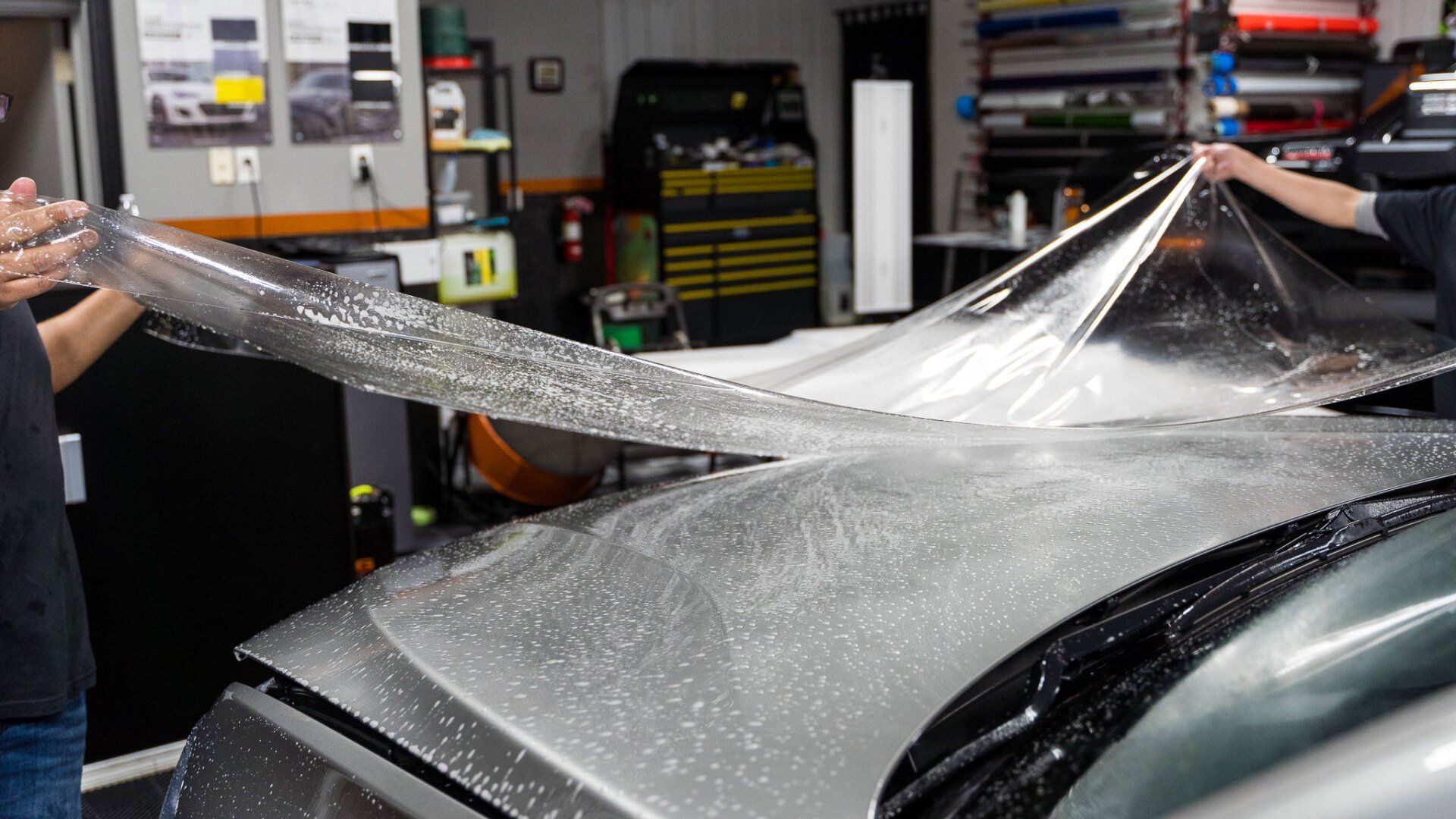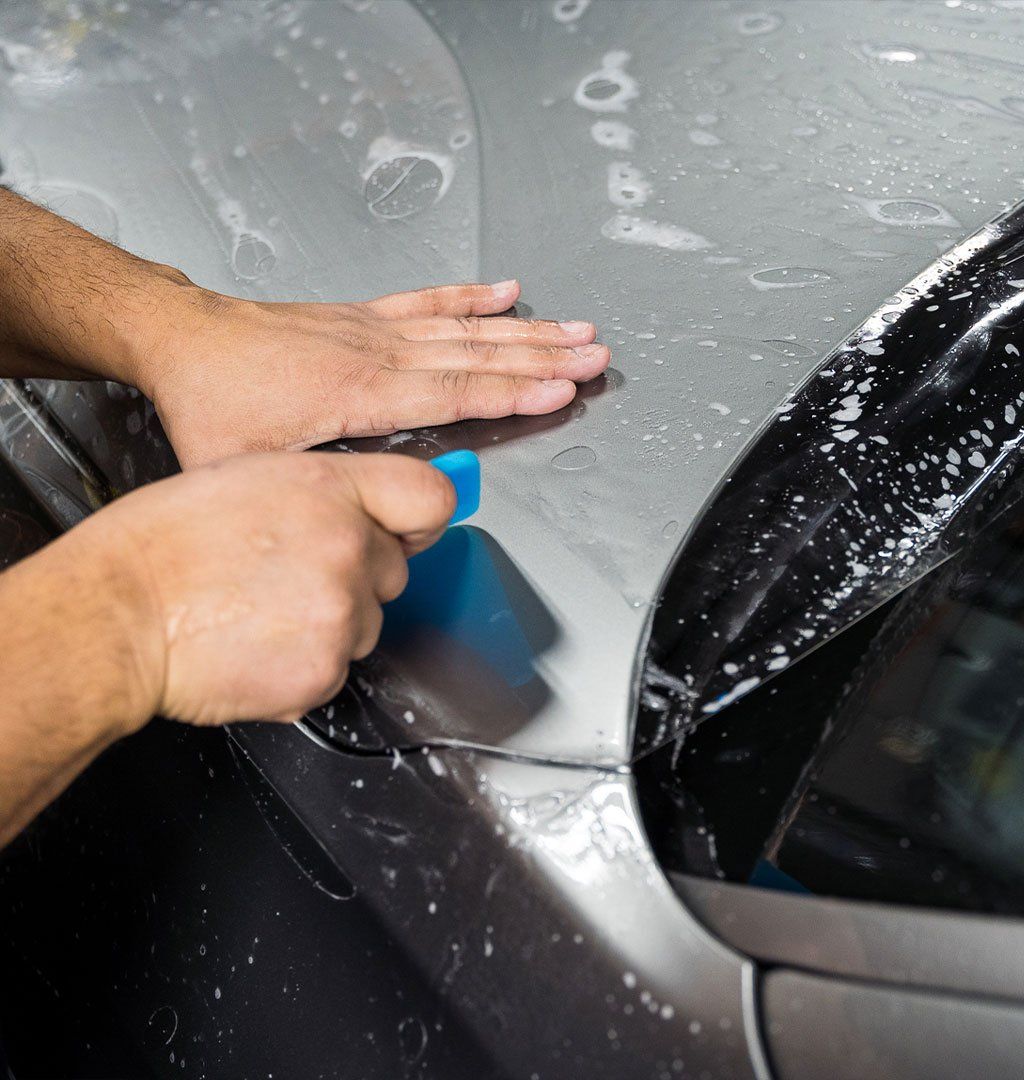PPF Coverage Explained: Partial, Front-End, and Full Wrap Protection for Your Vehicle
CALL (708) 574-8496
GET A FREE ESTIMATEProtecting your vehicle's paint job should be your top priority when caring for it. After all, who wants to drive around with a car that looks like it's been through a battle? That's where paint protection film (PPF) comes into play. Whether you're facing gravel roads on a weekend trip or the everyday scrapes of city driving, investing in PPF can save you time and money in repairs while keeping your car looking sharp. With different options available, such as partial coverage, front-end wraps, and full coverage, there's likely a perfect fit for your needs and budget. Let's explore what each option offers and help you figure out how to keep your vehicle looking brand new for years to come.
The Multi-Layer Power of Paint Protection Film
Paint protection film (PPF) is a multi-layered material engineered for durability and flexibility. It typically features a urethane-based topcoat that provides both elasticity and impact resistance, allowing it to absorb small debris impacts without affecting the paint underneath. Beneath that lies the adhesive layer, which ensures the film bonds securely to the vehicle’s surface without damaging the original paintwork when properly installed or removed. The overall construction gives PPF its strength and long-term resilience, offering a clear, glossy finish that maintains the original paint color and depth.
Modern advancements in PPF technology have also improved the film’s self-healing properties. With exposure to heat—whether from the sun, hot water, or an engine running beneath the hood—minor surface blemishes on the film can naturally fade or disappear. This means your car continues to look smooth and polished even after exposure to common driving hazards like road grit or light debris. The self-healing capability, combined with hydrophobic qualities that repel dirt and water, makes PPF a low-maintenance yet high-performance solution for vehicle owners.
Unlike traditional waxes or sealants that wear off quickly, PPF offers long-term protection that can last for years with proper care. It acts as a physical barrier, shielding the paint from rock chips, bug acids, and harsh weather conditions. When installed by a skilled technician, the film fits seamlessly along curves and contours, enhancing both function and aesthetics. Whether you drive a daily commuter or a performance vehicle, the result is a sleek, factory-fresh look that endures through every season.
Understanding Your PPF Options
Paint protection film offers an effective solution for maintaining your vehicle's aesthetic appeal while safeguarding it against the wear and tear of everyday driving. Each type of coverage serves distinct purposes and comes with its advantages and considerations. Understanding these differences can help you make a well-informed decision about what best suits your needs.
Partial Coverage: Targeted Protection
Partial PPF coverage involves applying protective film primarily to high-impact areas such as the front bumper, hood, and side mirrors. These spots are particularly vulnerable to chips from stones, debris, and routine exposure to road grime. If you frequently navigate urban streets or drive short distances, partial coverage might be all you need. This option provides reliable protection where it's most needed without requiring a significant investment. The primary advantage of partial coverage is its cost-effectiveness, typically ranging from $500 to $2,000 depending on your vehicle size and the installer.
Installation is also faster since only specific areas require attention, meaning you can get back on the road with minimal downtime. Most installations can be completed within a few hours rather than days. However, partial coverage does have limitations. The most significant consideration is that much of your vehicle remains unprotected, leaving those areas vulnerable to damage. Additionally, visible lines appear where the film ends, which some vehicle owners find disruptive to the overall appearance. Unprotected areas may also experience uneven wear over time, with dust, dirt, and stones causing faster aging or paint degradation compared to covered spots.
Front-End Wraps: Extended Defense
Front-end wraps significantly broaden the coverage area beyond partial protection. This option typically covers the full hood extending 24 to 36 inches from the front edge, the front fenders extending about 6 to 12 inches back from the leading edge, the entire front bumper, and often the headlights as well. If you regularly traverse highways or rural roads with loose gravel, this extra layer can be invaluable. The front-end wrap serves as an essential line of defense for the most vulnerable parts of your vehicle. By focusing on areas that are often subjected to wear and tear from road debris and environmental contaminants, this type of coverage aims to preserve the vehicle's aesthetic while preventing more profound issues down the road.
The hood catches flying rocks and other projectiles before they can damage your paint, while full bumper coverage mitigates damage from parking mishaps or small collisions. Headlight protection prevents yellowing and scratching, maintaining clarity and visibility. Front-end wraps typically cost between $1,500 and $3,500, making them more expensive than partial coverage but still more affordable than full wraps. This option strikes a balance between comprehensive protection and cost, making it a popular choice for drivers who want to protect their vehicle's most vulnerable areas without committing to full wrap pricing.
Full Wrap Protection: Maximum Coverage
The full wrap PPF option represents the pinnacle of vehicle protection. With this choice, every painted surface of your vehicle is coated with film, effectively guarding against scratches, chips, and environmental degradation. This comprehensive approach acts as a formidable barrier against various forms of damage, from gravel roads to bird droppings, tree sap, and acid rain. One of the most compelling advantages of full wrap protection is its seamless appearance. When properly installed, full PPF yields a unified look without visible edges or lines. This seamless aesthetic is particularly important for luxury vehicles that rely on visual appeal. Instead of worrying about uneven patchwork with partial installations, owners can enjoy the confidence that their car maintains its sophisticated allure.
Full wrap protection also offers enhanced resale value. Vehicles equipped with comprehensive coverage often retain more of their value compared to those lacking such protection. Cars with full wraps tend to attract interest from potential buyers due to their well-maintained appearances and pristine paint quality. This makes full wrap protection not just a defensive measure but also a smart investment in your vehicle's future value. The primary consideration with full wrap protection is the cost, which typically ranges from $2,000 to $6,000 or more depending on your vehicle's size and complexity. Installation also takes longer than other options, sometimes requiring several days to complete properly. However, many vehicle owners find that this investment pays off through preserved aesthetics, reduced repair costs, and stronger resale values over time.
Choosing the Right Coverage for Your Needs
Selecting the right PPF coverage depends on several factors unique to your situation. Your driving habits play a crucial role in this decision. Consider how often you drive in harsher environments and the potential damage your car might face. If you frequently navigate bustling urban streets where minor scrapes and chips are more likely, front-end wrap or full wrap coverage might be worth the investment. Conversely, if you enjoy leisurely drives through areas with less traffic and open roads, partial coverage may provide adequate protection at a more accessible price point.
Vehicle value is another crucial element to consider. Higher-end vehicles or classic collections often benefit significantly from comprehensive coverage since maintaining their pristine condition plays a vital role in their resale value. A well-protected vehicle attracts potential buyers and instills confidence in its upkeep. For everyday vehicles, the decision may lean more heavily on budget considerations and how long you plan to keep the car. Your budget naturally influences your choice, but it's important to think beyond the initial cost. While full wrap protection presents the highest upfront expense, it can save money on repairs over time and preserve resale value. Partial and front-end wraps deliver substantial advantages at more modest price points.
Balancing effectiveness with affordability requires evaluating long-term benefits like increased resale value and decreased repair costs alongside the immediate financial commitment. The environment where you drive and park your vehicle also matters. Vehicles regularly exposed to harsh weather, coastal salt air, construction zones, or unpaved roads face greater risks and may justify more comprehensive protection. Similarly, if you park outdoors rather than in a garage, your vehicle faces more environmental exposure that could warrant additional coverage.
Making Your Investment Worthwhile
Paint protection film represents an investment in your vehicle's appearance and longevity. The right level of coverage depends on your specific circumstances, from how you use your vehicle to what you value most about maintaining it. Whether you prioritize aesthetic appeal, resale value, or simply want to avoid the frustration and expense of paint repairs, PPF offers a solution tailored to your needs. Consider consulting experienced professionals who can assess your vehicle and provide recommendations based on your driving patterns, vehicle type, and budget. Many installers offer consultations that can help clarify which option delivers the best value for your particular situation. Ultimately, investing in PPF coverage means investing in peace of mind. No matter which option you choose, you're taking a proactive step to protect your vehicle from the inevitable wear and tear of daily driving. With proper coverage in place, you can drive confidently knowing your vehicle's finish is shielded from chips, scratches, and environmental damage that would otherwise require costly repairs or diminish your car's appearance and value over time.
Leading PPF Specialist in Carol Stream, IL
Your vehicle deserves more than just a wash—it deserves a shield. At DAndrea Detail | PPF • Ceramic Coating • Window Tint, our
paint protection film (PPF) services
in Carol Stream, IL are tailored for drivers who take pride in every curve and color of their car. Using precision-cut films and expert installation techniques, we provide a barrier that resists chips, road debris, and wear from daily driving—keeping your finish flawless and your style intact.
Contact us to get started and keep your vehicle looking new for years to come!





